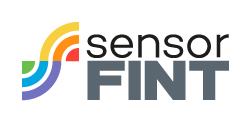NIRS for the Assessment and Authentication of Agrifood Products: from Lab to On-Site Applications
Cost: ¥ 380 CNY for Student and ¥ 510 CNY for Others
Abstract
Currently, the analytical needs in the agrifood sector require not only the fulfilment of the regulations to meet quality standards and protect their products from food frauds, but also to the need to self-control their processes to improve their efficiency. In addition, a key aspect is being able to control and trace the products along the entire food chain — “from farm to fork”— and for these purposes NIRS sensors are a great fit. This lecture will address the potential of NIRS to respond to specific applications in agriculture and food products (oils, feed, meat, fruit & vegetable), the main aspects in the development of a successful NIR application, together with the lastest and future advances and challenges in using NIR sensors for food quality, safety and authenticity issues, focusing on on-site applications using portable or on-line devices or the use of NIRS as a non targeted method.
Dolores Pérez-Marín. Professor at Department of Animal Production. University of Cordoba
Prof. Dr. Dolores Peréz-Marín, PhD in Agriculture Engineering (University of Córdoba-UCO, Spain). She holds the position of Full-Professor in Fundamentals and Technology of Livestock Production and in Non-destructive Spectral Sensors for Quality, Safety and Traceability of Agro-Food Products in the Faculty of Agriculture and Forestry Engineering (ETSIAM, University of Cordoba, Spain). She is a worldwide recognized expert in the used of sensors and new technologies applied to feed & food integrity. Her expertise in non-destructive spectral sensors (mainly, NIR and hyperspectral sensors) covers both fundamental and applied research. She began in 1999 working in the topic concerned the application of nonlinear calibration methodology to the difficult problem of measuring the ingredient composition of unground animal compound feeds. Since then, she has worked on an ever widening range of applications in food and agriculture − feed, fats and oils, meats, protein animal by-products, milk and dairy, and various fruits and vegetables − using NIRS, alone or combined with other sensors. One of her main expertise in linked to the processing of spectral big data with multivariate analysis tools and nonlinear methods.
This research has resulted in well over 250 publications; with 119 of these being peer-reviewed papers in top quality journals and several contributions as invited speakers in national and international conferences and workshops (H index 28). She has experience in the participation, management and scientific co-ordination of several national and European R + D NIRS projects, and in technology transfer contracts with companies. In the framework of the ICNIRS (International Council on NIRS), she was member of the Council Management Committee (2013-2019) and currently she is the President of its Educational Group of ICNIRS and member of the President’s Advisory Committe. She is currently editor of the Journal of NIRS, FAO consultant and member of the International Scientific Advisory Board of the Institute for Global Food Security- Queens University (UK). She was awarded in 2014 with the International Tomas Hirschfeld Award and in 2020 with the International G. Birth Award for her outstanding contribution in the field of NIR spectroscopy. She is currently the coordinator of the European Action Cost “European Network for assuring food integrity using non-destructive spectral sensors” (2020-2024).
Chemometrics Workshop
This will take the form of 4 pre-recorded videos, each lasting approximately 45 minutes. The intention is that they should be accessible to beginners in chemometrics, but I hope that more experienced users will also find them useful. The content will be:
1.Need for calibration in NIR and issues relating to experimental design and validation
2.Spectral pre-treatments including derivatives and scatter corrections
3.PCA, PCR and PLS
4.Nonlinear calibration methods
More information here

